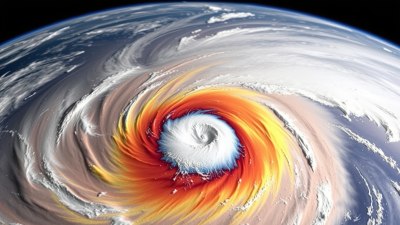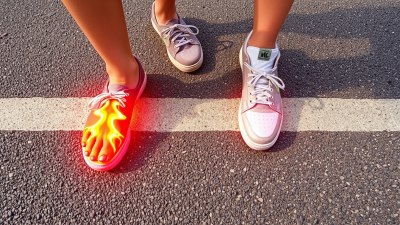How the Breeze Only Shows Up After the Sweat Has Settled
Explore why the breeze feels refreshing only after sweat has settled and the science behind this sensation.

Everyone has experienced that peculiar moment after intense physical activity when the intense heat mellows, sweat clings to the skin, and suddenly, a gentle breeze feels incredibly refreshing. This phenomenon, where the breeze seems to 'arrive' only after the sweat has settled, is a blend of physiological reactions and atmospheric conditions creating a unique sensory experience. Understanding why this happens involves delving into the science of sweat, evaporation, and the subtle interplay of temperature and air movement.
When you engage in exercise or endure a hot environment, your body starts producing sweat primarily to cool itself down. Sweat is mostly water with trace amounts of salts and other chemicals secreted through sweat glands in the skin. As sweatlines the surface of your skin, it begins to evaporate. Evaporation is a cooling process; as liquid sweat turns into vapor, it absorbs heat energy from your skin, lowering the body temperature.
Initially, right after vigorous physical exertion, your body is covered with a warm layer of sweat. At this point, your skin temperature is elevated, and the sweat film is thick and saturated. The ambient air often feels still or stuffy, and any breeze feels negligible or even absent. It is during this moment that one might wonder why the breeze isn’t noticeable immediately. The answer lies partly in the relationship between sweat evaporation, the temperature gradient between your skin and the surrounding air, and the mechanics of airflow.
When the air is still, the layer of humid air just above your skin creates a microenvironment where evaporation slows down. The sweat film remains relatively wet and warm, and the surface temperature of your skin stays high. In this condition, even if the air is slightly moving, it may not disrupt this humid boundary layer effectively enough to create a cooling breeze sensation. The warmth of your skin and sweat masks the subtle movement of air around you.
As time proceeds, and assuming your activity slows or ceases, several changes occur. Your body starts to cool, sweat starts to evaporate more steadily, and the skin's moisture level transitions from saturated wetness to a thinner, partly dried film. The layer of humid air on the skin’s surface begins to dissipate as evaporation increases, especially if there is any increase in air movement.
This transition is crucial. Once the humid boundary layer diminishes, the breeze’s cooling effect becomes pronounced. Any air moving across your skin now encounters a drier surface and a reduced temperature differential, making the airflow more perceptible. This is why a gentle wind that previously felt unnoticed suddenly feels cool and refreshing.
Another factor influencing the timing and perception of the breeze after sweat has settled is the thermoregulatory response of the body. As your core temperature falls during recovery, the skin’s blood vessels constrict slightly, reducing skin temperature. Cooler skin amplifies the contrast between your body and the surrounding air temperature. When combined with airflow, this creates a heightened sensation of coolness, emphasizing the feeling of the breeze.
Humidity plays a vital role as well. In highly humid environments, sweat evaporates slower because the air is already saturated with moisture, reducing the gradient needed for evaporation to occur. As a result, even when air moves, the cooling effect lessens. You might notice that the breeze feels weak or even nonexistent immediately after sweating when humidity is high, but as sweat dries up and the skin surface becomes less saturated, even subtle breezes feel more noticeable.
Wind speed and direction also affect when the breeze becomes apparent. On calm days, even a small change in wind direction or speed after physical activity can signal the arrival of the breeze. This airflow picks up and carries away the moisture-saturated air layer on your skin, enhancing evaporation and cooling sensation. On the other hand, during steady strong winds, the breeze may be noticeable earlier, but its cooling may be initially masked by the warmth of saturated sweat and skin temperature.
On a neurological level, the skin has specialized receptors known as thermoreceptors that detect temperature changes and transmit signals to the brain about hot or cold sensations. When your skin is wet with sweat, these receptors may be less sensitive to mild changes in airflow because the humid environment tempers the temperature shifts. As sweat evaporates and the skin dries, thermoreceptor sensitivity improves, making the breeze feel more pronounced as it triggers these temperature-sensitive neurons more effectively.
Psychology and perception also influence how we experience the timing of the breeze. When exerting oneself physically, focus and awareness are typically on the internal sensations of fatigue, heat, and muscle exertion. This internal focus might dull sensitivity to external subtle cues like a gentle breeze. Once activity stops and the physical demand relaxes, the brain shifts attention to the external environment, magnifying the perceived sensation of air movement and cooling.
Environmental context frames the entire experience. In enclosed or sheltered places, air movement can be minimal, so the breeze arrives later as you move to less obstructed areas. Conversely, in open spaces, air circulation might be more dynamic, so the breeze could feel sooner but still be subdued by sweat temperature and saturation. Urban environments with microclimates, where buildings create wind tunnels or still pockets, influence when and how the breeze manifests post-exercise.
There is also a cultural and experiential element to this phenomenon. Many athletes and outdoor enthusiasts cherish the feeling of the 'post-run breeze,' that moment when physical effort subsides, sweat clings less ominously, and the breeze seemingly emerges to soothe the skin. It becomes a cue signaling the end of exertion and the beginning of recovery, enhancing the association between sensory experience and emotional relief.
Experiments studying human thermoregulation and airflow confirm these observations. Researchers have demonstrated that increasing air velocity accelerates evaporation and cools the skin effectively. However, maximum cooling effects emerge only after sweat shifts from a dense layer to a thinner film, aligning with the subjective timing of perceiving the breeze.
In designing athletic wear and sports gear, manufacturers consider this interaction between sweat and airflow. Fabrics engineered to wick moisture away and promote rapid evaporation seek to simulate the cooling breeze effect earlier by reducing the sweat layer on skin surface, minimizing the damp feeling. This leads to an earlier onset of comfortable airflow sensation, enhancing performance and comfort.
Similarly, architectural design for living spaces and public venues accounts for natural ventilation principles to optimize cooling effects, especially in warm climates. Proper airflow ensures that sweat evaporation isn’t hindered, allowing the breeze sensation to arrive timely, improving human comfort.
Understanding how the breeze seems to 'show up' only after sweat has settled has practical implications. For athletes, recognizing this might help in pacing exercise, incorporating cool-down periods, and using environmental cues to regulate body temperature. For casual outdoor activities, it explains why sitting still immediately after heavy physical effort might feel warmer before the relaxation breeze kicks in.
On a deeper level, this phenomenon reveals the dynamic boundary between our bodies and the environment, the subtle feedback loops that maintain homeostasis, and how simple natural occurrences like a breeze embody complex physiological and physical principles. It also underscores the importance of air movement in human comfort, beyond what temperature alone reveals.
In summary, the breeze feels like it arrives only after the sweat has settled due to the combined effects of sweat evaporation dynamics, skin temperature changes, air movement, humidity, thermoreceptor sensitivity, psychological focus, and environmental factors. The initially saturated, warm skin surface limits immediate cooling sensations, while subsequent evaporation and cooling enhance the perception of airflow, creating the memorable, refreshing breeze post-exertion.
Next time you finish a workout or step outside on a hot day, take a moment to notice the transformation of your sensory environment. The gentle breeze you feel then is not just air moving; it's the culmination of your body's cooling efforts and the atmosphere working together to restore balance and bring relief. This understanding enriches the appreciation of an everyday sensation and connects you more deeply to the rhythms of your body and the environment.











